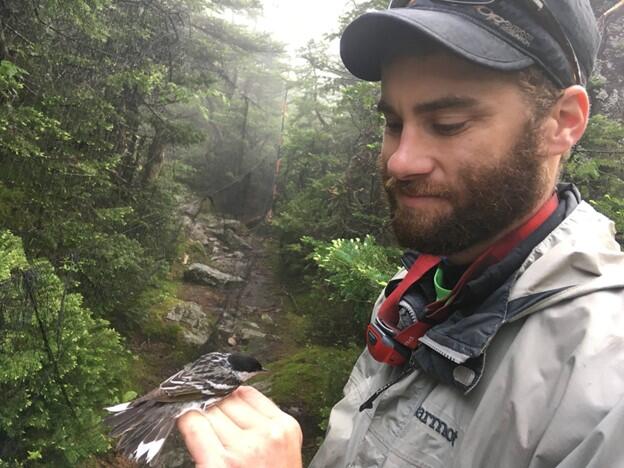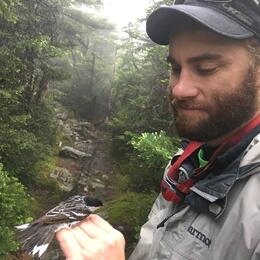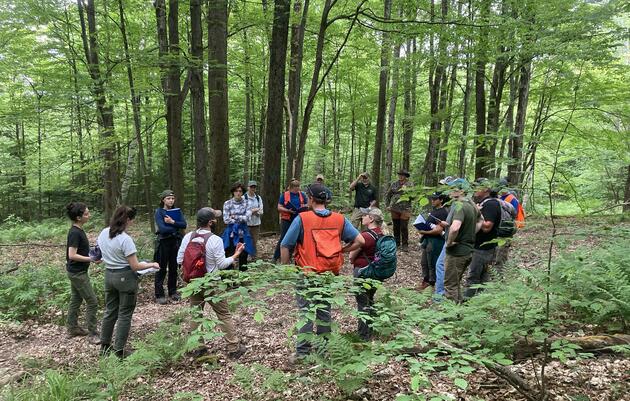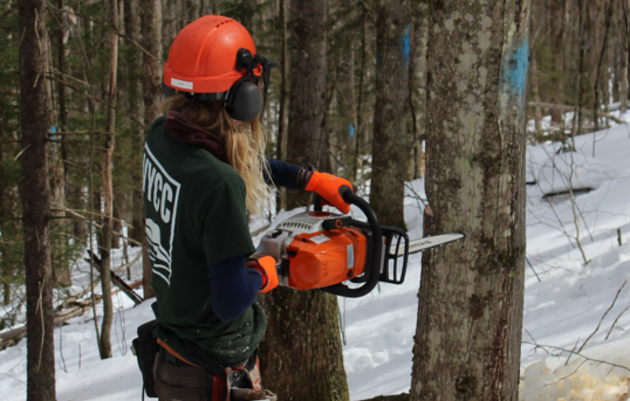I love autumn in Vermont—a time of harvest, enjoying the land's bounty, and some of the finest weather of the year. In my world, it is time to press apples, put up the garden, ensure the last of the firewood is set, and—my favorite part—spending as much time in the woods as I can, often trying to fill my freezer with free-range organic protein to sustain my family for the year to come.
Fall is my season of reflection, best spent in the woods, contemplating my work with landowners and the challenges and opportunities that lie ahead. I ask myself what is necessary in order to continue to effectively engage landowners as active stewards of our forests- for the sake of biodiversity, forest health and resiliency, and sustainable human use of the land.
The challenges landowners face in navigating climate, biodiversity, economic, and sociopolitical considerations are becoming increasingly complex. Meeting with landowners this summer, I saw first-hand destruction caused by back-to-back extreme rain events. I talked with landowners about the decline of songbirds, the collapse of insect populations, and pressing challenges to forest health such as emerald ash borer, beach bark disease, beech leaf disease, and other pests and pathogens, including the ever-challenging impacts of invasive plants. Together, we discussed the logistical and financial realities of addressing these challenges.
With several landowners, the conversation turned to the public debate regarding active management vs. concepts of proforestation; many landowners I met with seemed to be looking for validation that harvesting trees was, indeed, a good thing for the forest- and in many cases- this was easy validation to give, as I saw overall well-planned forest management on these lands that was clearly resulting in a more diverse and complex forest condition. In forests with a history of well-designed management efforts, we discovered some of the richest songbird communities.
We discussed how forest management isn't one-size-fits-all and how not all forests need intervention; we talked of balance, adaptability, and following the scientific consensus, which evidences that, here in Vermont, our goal best be to maintain intact, connected forested landscapes, and on a case by case basis, seek opportunities to restore our forests to an old forest condition through carefully designed active management where such conditions are currently lacking. We also talked about how some birds, and greater wildlife, require young forests- and, here again, how to find a balance between young forest creation and promotion of old forest conditions.
Landowners shared concerns about the legacy they’ll leave and ensuring their descendants' commitment to the land. We talked of forest time and how actions today play out well beyond our lifetimes into the future- and thus, our need to strive to maintain continuity in our stewardship efforts across generations. On occasion, I met with multi-generational family members that regularly gather on their shared family land- reuniting to tackle land stewardship projects, together- these cases truly warmed my heart and fueled my hope for the future.
Overall, the commitment and care that these landowners showed towards their forest was inspiring to me, as was, equally, the care and consideration that their foresters were giving to the interests of these landowners. And, despite these challenges, Vermont landowners are uniquely positioned to take advantage of a wealth of resources and opportunities that exist.
Vermont landowners are fortunate to have the Use Value Appraisal/Current Use Program, which rewards them for maintaining forests and working with licensed foresters on sound management. We can have confidence in the suite of foresters supporting the program in each county and statewide; we should appreciate having licensed foresters to begin with- as several states around us do not. Additionally, we have habitat biologists and ecologists that work with landowners, often at no cost, both from State agencies like Vermont Fish and Wildlife Department, as well as non-profit organizations such as Vermont Coverts and my own organization Audubon Vermont; furthermore, we have extension foresters, county conservation district managers, and many others working to support landowners.
Through the Farm Bill, landowners can access funds via the National Resource Conservation Service (NRCS) to offset costs for activities like developing management plans, managing invasive plants, and practicing bird-friendly forestry.
We are fortunate to have land trusts with which to explore permanent conservation options- and we have organizations like Vermont Housing and Conservation Board working with partners to offer legacy planning guidance.
We are fortunate to have some of the preeminent experts in the field of forest ecology, carbon, and climate change impacts actively researching and publishing cutting-edge scientific guidance residing here in our humble state- Dr. Tony D’Amato, Dr. Bill Keeton, and Dr. Ali Kosiba come to mind- and that is just the University of Vermont. Programs such as Audubon Vermont’s Forester Training and Endorsement Program and our landowner technical assistance program, Woods, Wildlife, and Warblers, work with foresters and landowners to transfer such knowledge. Vermont Woodlands Association’s own 12 Steps for Climate Resiliance, co-authored with Dr. Ali Kosiba, is another prime example.
We’re fortunate to have online resources like VTinvasives.org and OurVermontWoods.org, with more in development. We have entities like Vermont Coverts and Vermont Woodlands Association working in partnership to offer peer-to-peer in-person training and other educational programs for landowners, alongside many of the State and non-profit organizations I mention above. These in addition to place-based non-profits demonstrating sustainable land management principles and offering programs to the public, such as Merck Forest & Farmland Center and Northwoods Stewardship Center.
We are fortunate to have state-level road maps for how we can all work together, across decision makers, practitioners, landowners, and the public at large towards a more ecologically sound future; here I am thinking of Vermont Conservation Design, the Vermont Climate Action Plan, and now, Act 59. Many states do not have such roadmaps and certainly not based on such solid science and considerations as ours. We are fortunate to have behind-the-scenes collaboration among all of these entities, working together to develop and share the resources with which we can all move forward towards a brighter future. Organizations like the Vermont Natural Resources Council are a strong partner in driving policy and public advocacy.
We are fortunate to have a still-intact forested landscape, complex mountainous terrain, and abundant freshwater resources- elements that will help Vermont be resilient in an uncertain future.
We are fortunate to have collaboration and peer-to-peer knowledge sharing among landowners in Vermont- through programs such as Cold Hollow to Canada, Vermont Coverts, local conservation commissions, and various woodland owner organizations- including our very own Vermont Woodlands Association.
Ultimately, we are fortunate to have a shared ethos- a Land Ethic- more often than not, among landowners here in Vermont- Vermonters tend to want to be good stewards of the land- and that fact alone is the basis for all else we stand upon.
Looking forward, the key question is: how do we effectively distill and deliver these resources to the public? And, looming now: how do we also address misinformation that would twist the same science so as to undermine the tireless and longstanding efforts of our conservation professionals and sow distrust among the public writ large?
I think an answer to this question is both timeless, yet ever pressing: we need shared experience and first-hand knowledge transfer happening in community with one another. In doing so, I feel that so much can be gained from simply getting outside and working the land with others. In this way, we must continue to explore and celebrate our connection to the land- specifically seeing ourselves as an active part in the ecosystem as opposed to being removed from the ecosystem.
Now more than ever, practitioners must readily seek input from landowners on the information they need and the best methods to deliver it. We must lean into social science and be better communicators. So, my task for all of us is to think about how we can join with our community, to share our experiences on the land, and also explore how information and resources can best be delivered to those in need. If you have an idea or want to start a conversation, I encourage you to reach out. In the meantime, check out the collaborative programs of Audubon Vermont, alongside our partners, here.
Hope to see you out there,
Tim Duclos








